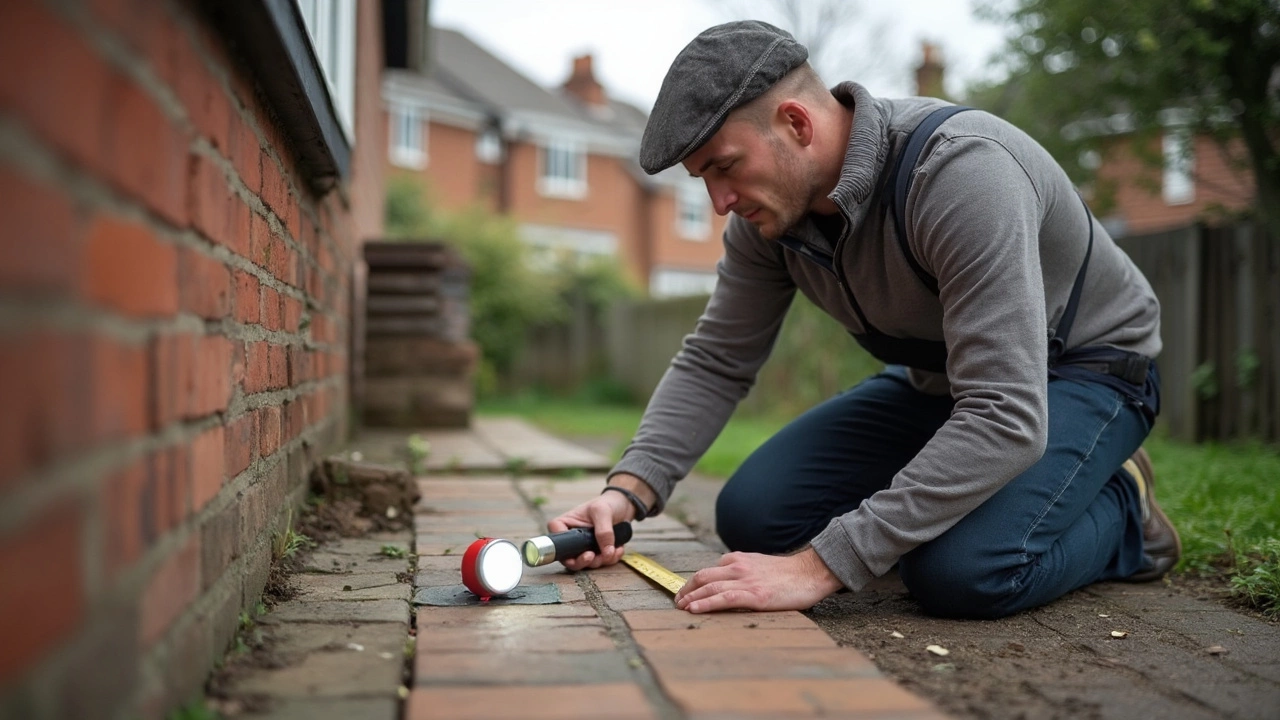Concrete Crack Repair: Quick Fixes & Long‑Term Solutions
If you’ve walked on a floor and felt a dip or saw a line spreading across the surface, you’re probably looking at a concrete crack. Cracks happen for many reasons – shrinkage, settlement, or even temperature changes. The good news is most cracks are fixable, and with the right approach you can stop them from getting worse.
Identify the Type of Concrete Crack
First, figure out what kind of crack you’re dealing with. A hairline crack that stays thin and doesn’t move is usually a shrinkage crack. These are normal and mostly cosmetic. A wider crack that opens and closes with the seasons is a settlement crack, often caused by the soil moving underneath. If the crack keeps getting bigger or you see water seeping in, it could be a structural crack that needs professional attention.
Take a ruler and measure the width. If it’s under 1/8 inch (3 mm), you can probably DIY it. Anything larger, especially if it’s deeper than a few inches, is a sign you might need a specialist.
Step‑by‑Step DIY Repair Guide
Here’s a simple process to seal most small to medium cracks:
1. Clean the area. Sweep away dust, loose bits, and any debris. A vacuum works well, followed by a brush to get into the crack.
2. Widen the crack slightly. Use a cold‑chisel and hammer to create a V‑shaped groove. This gives the filler something to grip.
3. Apply a concrete bonding agent. Spray or brush it in and let it set for the time the label says – usually a few minutes.
4. Mix the repair mortar. Follow the packet instructions, mixing just enough to use within 30 minutes. A smooth, thick paste works best.
5. Fill the crack. Push the mortar into the groove with a trowel, making sure it’s packed tight. Overfill slightly so you can smooth it later.
6. Smooth the surface. Use a putty knife to level the mortar with the surrounding floor. A damp sponge can help blend the edges.
7. Let it cure. Keep the area moist for a day or two – misting with water works. Avoid heavy traffic for at least 24‑48 hours.
If you spot hairline cracks, a concrete crack sealant (a liquid polymer) is faster. Just clean, apply with a brush, and let dry. It won’t hold weight but stops moisture and stops the crack from spreading.
When you notice cracks that keep widening, water pooling, or signs of foundation movement, call a structural engineer or a reputable flooring contractor. They can assess whether you need underpinning, injection grouting, or a larger repair.
Preventing future cracks is easier than fixing big ones. Make sure the ground beneath the slab is well‑compacted, use a proper vapor barrier, and let the concrete cure slowly by keeping it damp for at least a week. If you’re renovating, consider adding control joints – these are deliberate cuts that let the concrete expand without cracking.
In short, most concrete cracks can be managed with a few tools and some patience. Start with a clear assessment, use the right materials, and don’t hesitate to call a pro if the crack looks serious. With these steps your floors will stay smooth, safe, and ready for daily life.
Can I Fix a Foundation Crack Myself? DIY Basics & Reality Check
- Gavin Whitaker
- |
- |
- 0
Wondering if you can tackle a foundation crack on your own? This article breaks down when DIY repair is safe, how to do it, and when to call in the pros. You'll learn what tools and materials you actually need, what really causes those cracks, and how to spot the telltale signs that signal a bigger issue. Get straight-up advice and tips drawn from real home repair experience. By the end, you'll know when to roll up your sleeves—and when to grab the phone.
View more